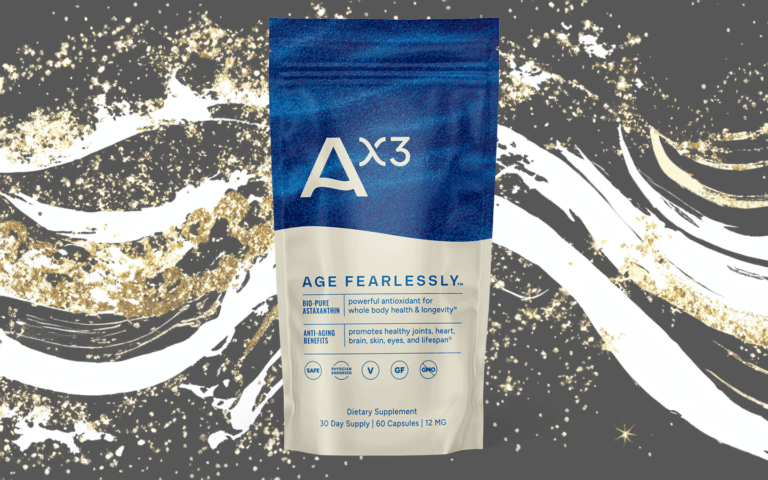Coffee might kick-start your morning, but what do you know about how much caffeine you put in and its effects on your body and mind? Throughout March, we’re celebrating National Caffeine Awareness Month and providing you with the complete picture of caffeine.
Have you ever thought about how accessible caffeine is in the modern world?
Go into any convenience store, cafe, restaurant, gym or office building, and you’ll likely be greeted with a gargantuan range of caffeinated products, all giving you the side eye.
Coffee, tea, energy drinks, soda, chocolate and supplements are just a few of the likely energy-jolting products on offer. It’s a line-up that would put 90s classic ‘The Usual Suspects’ to shame. All with different tastes, effects, aromas, pros and, of course, cons.
Before digging in deep, it’s important to stress this isn’t a rallying cry against the caffeine community. Anything but actually. More of a re-evaluation and analysis of what’s safe to pump into our bodies on a daily, weekly and monthly basis.
So many benefits from caffeine have lasting impacts and genuinely improve day-to-day function and productivity.
But does anybody know what the guidelines are?
This month, Muscle and Health will lay it all out, warts and all, to educate, stimulate, and hopefully leave you with an Arabica aftertaste (other types are available).
The birth of caffeine…
To fully understand why this awareness month was set up, returning to where it all began for caffeine is valuable. When we say go back, we mean it.
The date is 8th February 1794 (we told you), and a gentleman named Friedlieb Ferdinand Runge was born on the outskirts of Hamburg, Germany. Runge was a curious and bright child, conducting experiments as an apprentice in his uncle’s pharmacy. After inadvertently getting a drop of henbane juice in his eye, he noticed it soon dilated. This led him to replicate the conditions on a cat’s eye and follow that up with a dissertation on the effects of atropine, a chemical found in plants like henbane and deadly nightshade.
Atropine blocks receptors for the neurotransmitter acetylcholine released by the nervous system to activate muscles.
Following along alright?
Runge’s studies at the University of Jena led him to present his findings of atropine’s ability to dilate cats’ pupils to writer Johann Wolfgang von Goethe. After being impressed, he presented Runge with a packet of coffee beans. He felt their chemical components were worth investigating.
How right he was. Later that year, Runge discovered caffeine.
All we can say is, thank you, sir.
United States v. Forty Barrels and Twenty Kegs of Coca-Cola
Let’s skip forward to 1911 when caffeine intake was questioned and put under the microscope. A courtroom case occurred over several weeks and was headline news centered around what we call an ‘energy drink’ today. The term was yet to be identified, but the product was similar.
In a courtroom in Chattanooga, a city in southeastern Tennessee in the foothills of the Appalachian Mountains, a drink you may be aware of was under fire.
Does Coca-Cola ring a bell?
In the early 20th century, your average bottle contained as much caffeine as a modern-day red bull – 80 milligrams per serving.
The man to bring a lawsuit against the soft drink giants was the brilliantly named Harvey Washington Wiley, nicknamed the ‘Father of the Pure Food and Drugs Act’ when it became legal in 1906. He began his crusade against Coca-Cola in 1909, citing the excessive use of caffeine as a particular threat to children.

Wiley attempted to get The Coca-Cola Company to remove caffeine from the drink’s formula entirely, citing the product being misbranded and adulterated. His attempts were eventually fruitless after exploiting a loophole found by Barnard College psychology instructor Harry Levi Hollingworth.
Hollingworth tested 16 subjects, all of whom had different levels of caffeine intake, gathering data and notes to assess the mental and motor skills under caffeine use and abstinence. Using caffeine capsules and placebos, he persuaded the court in his testimony that moderate doses of caffeine stimulated his subjects’ performance on an array of tests.
Despite the loss, Coca-Cola voluntarily lowered the caffeine in their drinks in 1912, with today’s number in an average can of 330ml at 34 mg.
Over a century has passed since Chattanooga, yet the same questions are still being posed. Due to the case being dismissed, the jury had no verdict on the broader implications and ripple effects caused by the lawsuit.
How much caffeine is too much?
Should the federal government regulate caffeine?
Those questions are still as prevalent today as they were 111 years ago. With an endless stream of more complex formulas, all dwarfing that of Coca-Cola in 1911, it’s essential to stay aware and keep the discussion open.
Little less conversation and more action, please
2003 is next on our caffeine journey through time. It’s the year the Caffeine Awareness Alliance sponsored the creation of National Caffeine Awareness Month.
Their goal was to advocate for a caffeine-free industry and provide information and resources to everyone, aiding people to make better decisions about their consumption of caffeinated products.
Several health conditions related to the over-consumption of caffeine can raise their ugly heads. These include: insomnia, an increase in anxiety, increased blood pressure, headaches and dizziness.

Dependency is also a red flag. If you’re the type of person who says they can only begin to operate after one or two caffeinated products in the morning or before work, then this could be something to look at and approach differently.
But, the first step is understanding how to hit the intake sweet spot to make better decisions about your caffeine intake.
For example, did you know that the U.S Food and Drug Administration considers 400 milligrams a safe amount of caffeine for healthy adults to consume daily?
What does 400mg of caffeine look like
So what does 400mg look like in language you’ll understand? It’s the equivalent of:
- One-and-a-half tall cups (12 oz) of Starbucks drip coffee
- Four 12 oz cups of McDonald’s drip coffee
- Five 8 oz cans of regular Red Bull
- About six 12 oz cups of brewed black tea
- About 12 cans of Coca-Cola
- About five and a half lattes
- Five shots of 2 oz espresso
- 82 hot chocolates
Listen to your body and moderate
At Muscle and Health, we do not recommend having 82 hot chocolates over your day. What it does show is the scale is wide and varied.
Topping the 400mg meter isn’t going to signal the end of times, and there have been studies conducted to study the performance-enhancing effects of caffeine.
Such doses may not hurt when taken on odd occasions, but it’s not something you want to be taking part in regularly. The key word in all of this is moderation.
What’s also important to remember is that everyone is different. People have wildly varied tolerances, so just because four cups of coffee goes down like a treat for one person doesn’t mean that wouldn’t leave another poor soul with a lower tolerance shaking like Elvis.
As a starting point at the beginning of National Caffeine Awareness Month 2023, here are some top tips to get started and to take forward for the rest of March:
- Simply look at what you consume – caffeine is often a hidden ingredient in some of our favorite foods!
- Be aware of how much caffeine you consume daily and stick to the maximum of 400mg; gradually lowering is possible.
- If you are physically dependent on caffeine, consider why you consume certain caffeinated drinks. Is it the flavor, the social aspect, the energy boost, or is it out of thirst or boredom? The answer will help you to determine if there is a healthier way to fill that need.
- Walk or run instead of that morning coffee and get off to an energy-boosting start to your day.
Turn in for the rest of the month, where we’ll explore all things caffeine.
Related Articles
Are Energy Drinks Bad For You?
Time For Tea: It’s Green Tea VS Black Tea In The Battle Of The Brews






